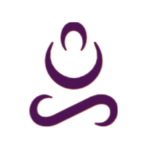A medical provider’s primary purpose is to improve patients’ health. However, medicine is also a business, and one of the most time-consuming and complex aspects of running a medical business is collecting payment for services rendered. This is where medical billing systems come in.
What Are Medical Billing Systems?
Medical billing is a collection of processes medical providers use to create and send invoices or claims to collect payment from insurance companies and patients for services rendered. In the past, medical billing relied on paper systems, but now the majority of transactions are processed using medical billing services and software.
What Are the Different Types of Medical Billing Systems?
There are three basic types of systems:
1. Closed
A closed system centers on one medical practice and uses electronic medical records. EMRs are the digital versions of the paper charts most medical providers once used. In these systems, records are only accessible to personnel at one particular medical provider and are not shared with other parties.
2. Open
Open systems are more commonly used than other types of medical billing systems. These systems allow the transfer of records between different healthcare providers.
In an open system, each patient has a unique electronic health record number. The patient’s EHR follows them from one provider to another. This allows each provider to review and update the patient’s records. However, because of privacy laws, only authorized parties with a legitimate medical purpose may review these records.
Users of a closed system tailor records to the specific record-keeping style of one practice. An open system needs to be compatible with the systems used by other providers, and the records need to be standardized so that they can be understood by all parties who need to access them.
3. Isolated
With isolated systems, patients, rather than health care providers, control and maintain their personal health records. Patients may use these PHRs to update their records with various providers, but only the patient maintains a physical copy of the records. This system provides patients with the highest degree of privacy, but PHRs can not legally replace official records from health care providers.
How Are the Different Medical Billing Systems Used?
The setup of a healthcare organization often dictates which type of system it should use.
Using a Closed System
Closed systems use digital tools to manage patients’ healthcare records. Each patient’s EMR includes a record of all of the patient’s data, such as diagnosis and treatment plans, from a specific provider. While providers outside the practice can not access the records, different providers within the same practice can link EMRs to obtain a comprehensive view of a patient’s treatment plan.
Healthcare professionals use EMRs to track when patients are due for checkups and preventative screenings. They also EMRs to monitor changes in patients’ vital parameters to identify health issues or adjust treatment plans and keep track of vaccination records.
Using an Open System
With open medical billing systems, all authorized persons, such as providers, billing teams, patients, organizations, and third-party vendors, can access all or parts of a patient’s EHR. EHRs are more comprehensive records than EMRs because healthcare professionals from multiple practices can edit them.
Patients’ entire medical histories are stored in their EHRs, rather than just their histories from a single provider. This makes it possible for patients to transition to a new provider or allow imaging centers and specialists to access the records without the patient needing to physically transport records from one provider to another.
EHRs also make it possible for patients to easily view their records by accessing digital portals. Open systems enable third-party billing services to use records to process medical bills. Patient privacy is protected by requirements that all personnel with access to the records, including billing companies, maintain compliance with the Health Insurance Portability and Accountability Act.
Using an Isolated System
Isolated systems are maintained entirely by patients. PHRs can not legally replace EHRs or EMRs, but patients can use their PHRs as a reference to provide their medical details whenever they visit a new provider. They can also choose to share them with providers to assist with a diagnosis and treatment plan. Some patients maintain their PHRs using software tools that provide a means to transmit records to providers.
Which Types of Medical Billing Systems Are the Best?
If you are running a small healthcare business and you do not intend to use any third-party billing systems, a closed system may make sense for you. It is less complex than an open system, and there are fewer privacy concerns because only the people in your practice can access the patient’s records. However, it offers less flexibility, and you may need to convert to another system down the road if you want to use third-party services or collaborate with other providers.
If you need to be able to collaborate with other medical providers or you plan to outsource your medical billing, you need to use open medical billing systems. There are more privacy concerns with an open system. However, EHR systems help to ensure compliance with HIPAA regulations by restricting access to EHRs to only authorized viewers.
Isolated systems are generally used by patients who desire the highest possible level of security for their records. However, because their records still need updating, patients must be willing to self-manage their health care records and medical history.
How Do Medical Billing Systems Impact Medical Billing Services?
Outsourcing medical billing services can lower costs, increase efficiency, and improve accuracy. However, to efficiently process medical bills, third-party services need access to medical records, which requires the use of open medical billing systems.
We help match providers with billing services. We also provide information and education about medical billing services, medical billing software, medical coding services, and medical billing careers.





